Sushibot cranks out 3,600 pieces per hour.
maguro san says two thumbs up to 3,600 piece/hour sushibot. via gadget lab [RK]
maguro san says two thumbs up to 3,600 piece/hour sushibot. via gadget lab [RK]
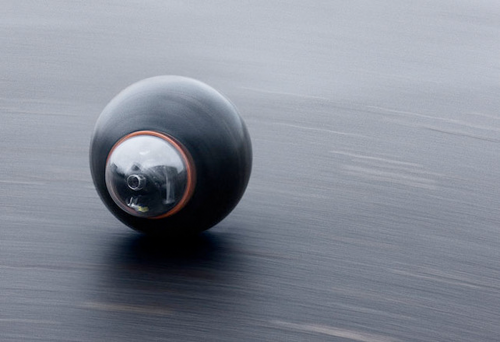
This robot originally designed to explore other planets is being tested as a spybot. GroundBot incorporates wide-angle cameras and assorted sensors into a sphere that can spy on bad guys autonomously in in mud, sand, snow, and water and it can float. Nearly two-feet tall, a little larger than a tire, it weighs 55 pounds. A surveillance robots can weigh 400 pounds or more. A battery powers it for 8 to 16 hours before needing a recharge and it goes six mile per hour. Groundbot is virtually silent, so it can self-propel around airports, border crossings, and wherever, fairly inconspicuously.
producer: rotundus

More robots! Robotic systems continue to evolve, slowly penetrating many areas of our lives, from manufacturing, medicine and remote exploration to entertainment, security and personal assistance.
Developers in Japan are currently building robots to assist the elderly, while NASA develops the next generation of space explorers, and artists are exploring new avenues of entertainment.

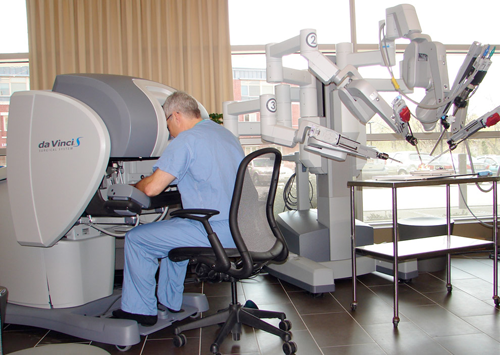
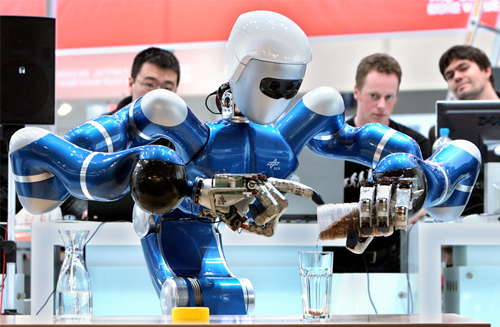
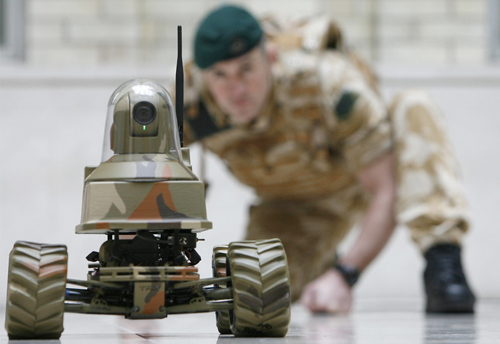
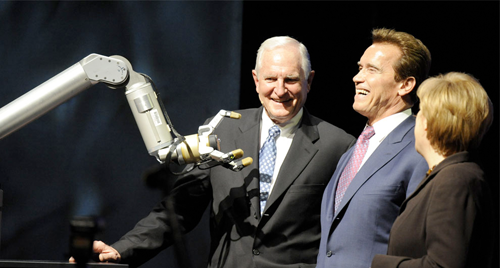

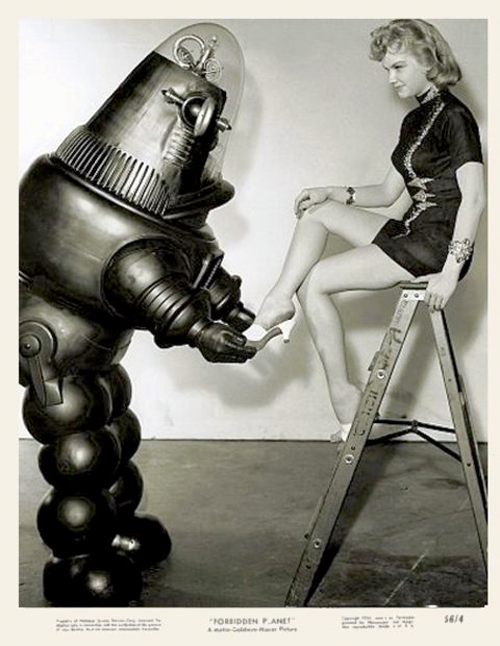
above: robbie the robot. shoe salesman. robbie debuted in forbidden planet, 1956.
I really can’t wait for my robotic personal assistant.
via: boston.com 28 more images!
 “A sewer worker is like a brain surgeon. We’re both specialists.” —Ed Norton, The Honeymooners.
“A sewer worker is like a brain surgeon. We’re both specialists.” —Ed Norton, The Honeymooners.
Ed’s fingernails would be a lot cleaner if this robotic sewer “crawler” existed. Though not an object of beauty this robot is designed to go where you would rather not. It’s estimated that 850 billion gallons of sewer and storm water leaking into watersheds around the country every year. With the Environmental Protection Agency cracking down on cracked pipes the SuperVision 250 submerges to the occasion.
Placed in pipes 10 to 72 inches in diameter, this little robot will track down splits, debris, corrosion, and breaks. Operators can watch the video feed from the 10X optical-zoom autofocus camera and use a joystick to pan and tilt. A ring of high-intensity, shadowless LEDs illuminates the scene; dual lasers help size up defects. A sapphire window shields the camera lens, while hardened stainless steel parts protect the crawler from the harsh sewer environment. And thanks to an ultrathin, Kevlar-reinforced tether (sorry, no wireless), the bot can crawl up to 1,640 feet through even heavily obstructed pipes. Just make sure to hose it off when it comes back.
The manufacturer claims it to be the Most Intelligent Crawler Ever is Also the Most Powerful. SuperVision sets a new standard for video inspection crawlers, integrating a host of innovations such as PipeBus, a communications protocol that allows for lighter cable and longer runs, as well as a zoom camera option, onboard diagnostics and the most sophisticated control console ever designed for a crawler. Like Envirosight’s ROVVER crawler, SuperVision boasts a modular design that lets you swap out camera heads, auxiliary lamps and wheels to meet the demands of the inspection at hand. And with a choice of cable reels, control units and pendants, you can build the system that best suits your working style.
Aluminum and stainless steel body, 6 wheel steerable drive and electrical clutch. For diameters from 10 in to 78 in. Includes 2 sets of additional wheels and Solarc auxiliary lights.
Details
# Kevlar-reinforced cable weighs 20% what others do, allowing SuperVision to travel much further into pipe.
# Zoom camera head with high-powered lamp array further extends effective inspection distance.
# Onboard intelligence speeds diagnosis and supports virtually any combination of auxiliary sensors and end effectors.
# Fully automatic reel pays out and retracts cable, preventing crawler tangles and jams.
# Interchangeable wheels, lamps and cameras adapt crawler to any size pipe.
# Adjustable-height camera (SV250) rises above debris and water, centering view in pipe.
Producer:Envirosight
All content ©2007 > 2024 DesignApplause